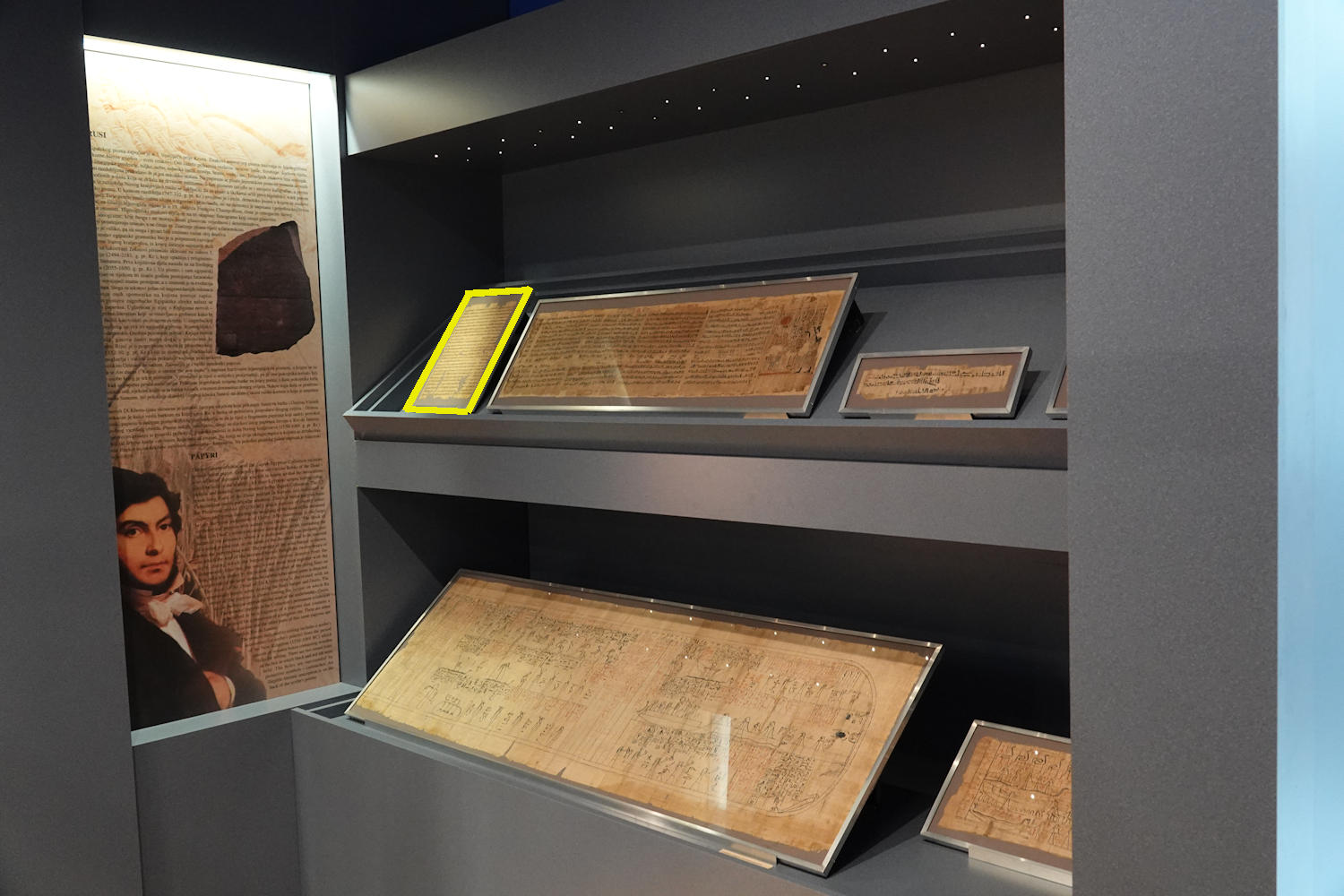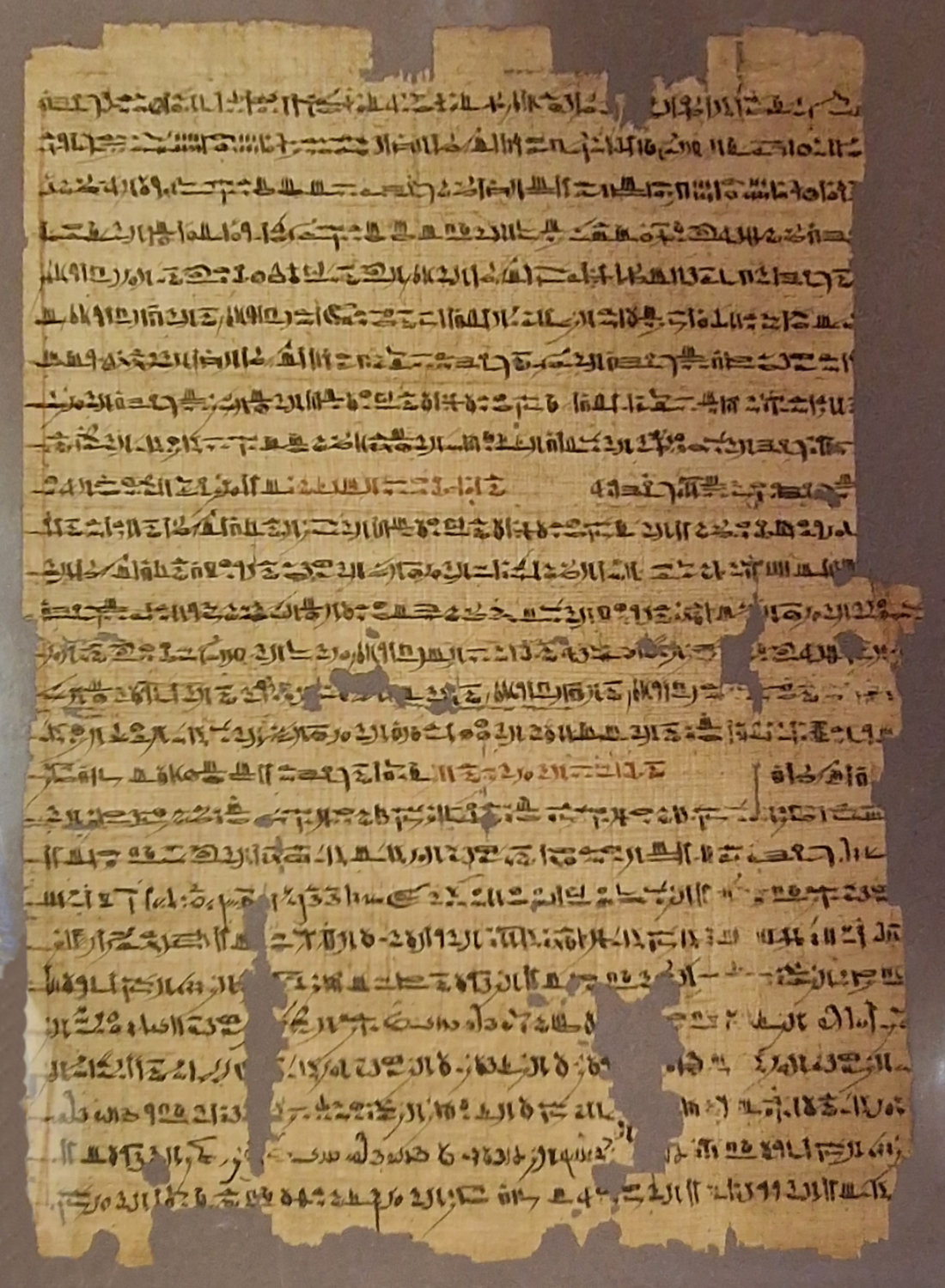Apis Embalming Ritual papyrus – Zagreb
Provenance Koller collection (Generaal Baron Franz Koller (1767–1826))
Most likely from Memphis (Saqqara)
Acquired in 1868
Ptolemaic c. 150 BC
This papyrus is one of the most important sources on the embalming process of the sacred Apis bull in ancient Egypt. Together with the Vienna fragment (Papyrus Vindobonensis 3873), it forms a virtually unique textual witness to these rituals
This fragment is part of a single papyrus roll, which was likely deliberately split to increase its sale value. The papyrus is written in both hieratic and demotic script. The hieratic passages mainly deal with the rituals, while the demotic sections contain more technical instructions
The text describes in detail the embalming process of the Apis bull, including the removal of organs, treatment of the body with natron and resin, and specific rituals concerning parts like the hooves and anus. The ritual lasted 70 days and involved a combination of practical procedures and religious ceremonies, performed by specialized priests
The Zagreb Papyrus 597-2, together with the Vienna ÄS 3873 fragments, is the principal papyrus source for the Apis embalming ritual and is frequently cited in Egyptological literature.
See:
Papyrus Vienna KM 3873 + Papyrus Zagreb 597-2 by P. Maeyrat (Ägyptische Rituale der griechisch-römischen Zeit)
A look through his window: the sanctuary of the divine Apis Bull at Memphis, Nenad Marković, 2016 (Zagreb)
The Apis Embalming Ritual, P. Vindob, ÄS 3873, R.L. Vos 1992 (Vienna)
The embalming process of the Apis bull
Height 30 cm, width 22 cm
Ref. No. P. Zagreb E-597-2
Archeological Museum Zagreb
Photos VB 2025-05
Zagreb fragment. Good pictures of the Vienna fragments can be found here


